In this article you’ll learn how to construct the E major triad as well as how to play it on piano and guitar.
We’ve also included sections on inversions and figured bass for those that want a deeper understanding. Lastly, listen to some examples of popular songs that featured this triad.
Root , 3rd and 5th
The E major triad is formed of the 1st, flat 3rd and flat 5th of the E major scale.
- E – root note
- G# – Major 3rd above the root
- B – perfect 5th above the root
Here is the triad written on the stave in the treble and bass clef.


Before you read on make sure that you have a basic understanding of intervals. Intervals are vital for understanding how triads are built. Check out our guide to major, minor and perfect intervals for more on this.
E Major Triad on Piano
Below you can see how to play this triad on the keyboard or piano. This pattern of notes could also be played starting on any E natural note.
However, the order of the notes must be the same:
- E – lowest note
- G sharp – middle note
- B – highest note
This is called ‘root position’.

E Maj Triad on Guitar
There are two simple positions that you can use to play a E major chord on guitar. Both positions can also be slide up or down the neck to play different major triads.

1st Inversion
A 1st inversion is where we take a triad but we start on the second note, which in this case is G sharp. We still keep the B above, but then the E (or root) become the highest note.
This way of rearranging a triad gives us a different sound as the relative pitches of the three notes has changed.
- G sharp – lowest note
- B – middle note
- E – highest note
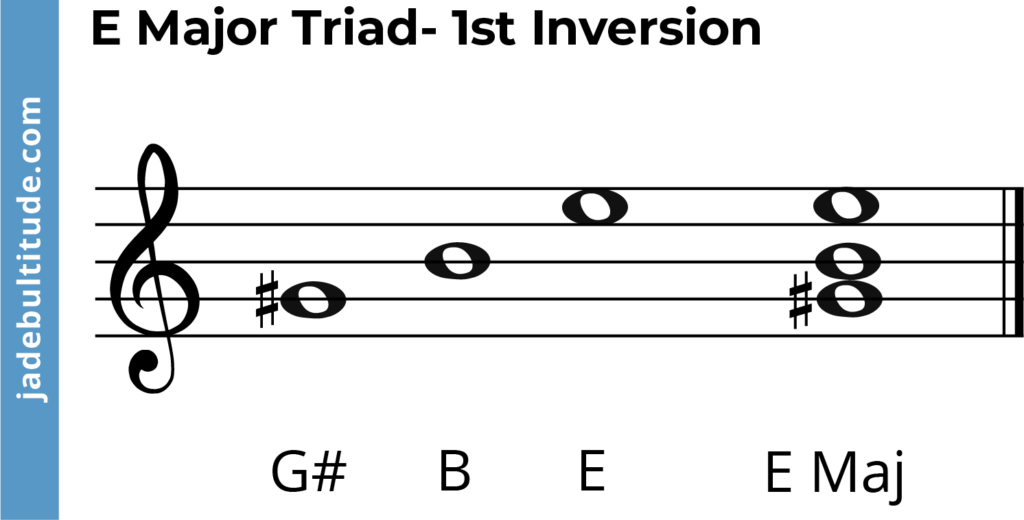
1st inversion on Piano
On the piano we can play the 1st inversion of a E Maj triad by starting on an G sharp. They play the B above and the E above this.
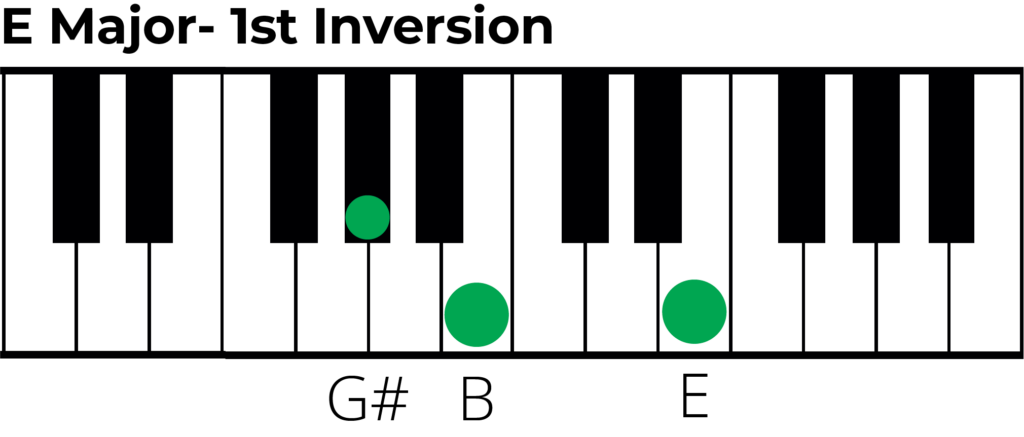
1st Inversion on Guitar
Below are the most common shapes for playing a E maj triad in the 1st inversion. Remember that we can only use certain shapes are the pitches of the three notes are important.

2nd Inversion
A 2nd inversion is where we take a triad but we start on the third note, which in this case is B natural. We play the E above then the G# becomes the highest note in the chord.
- B – perfect 5th (lowest note)
- E – root note (middle note)
- G# – major 3rd (highest note)
We could construct a 2nd inversion starting on any B note in any octave. The only thing that must stay the same is that the we use the E above and the G# above that.
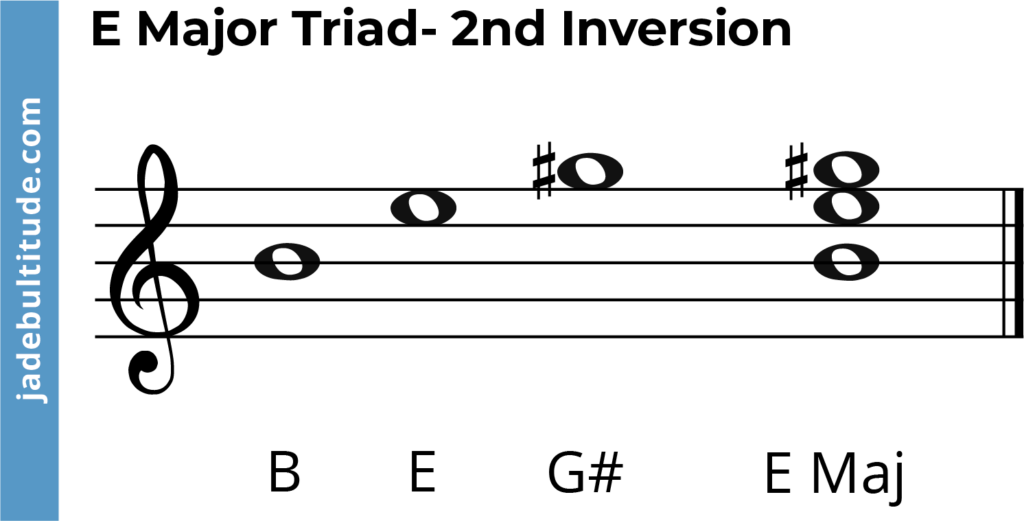
2nd inversion on Piano
On the piano we can play the 2nd inversion of a E Major chord by starting on a B natural. They play the E above and the G# above this.
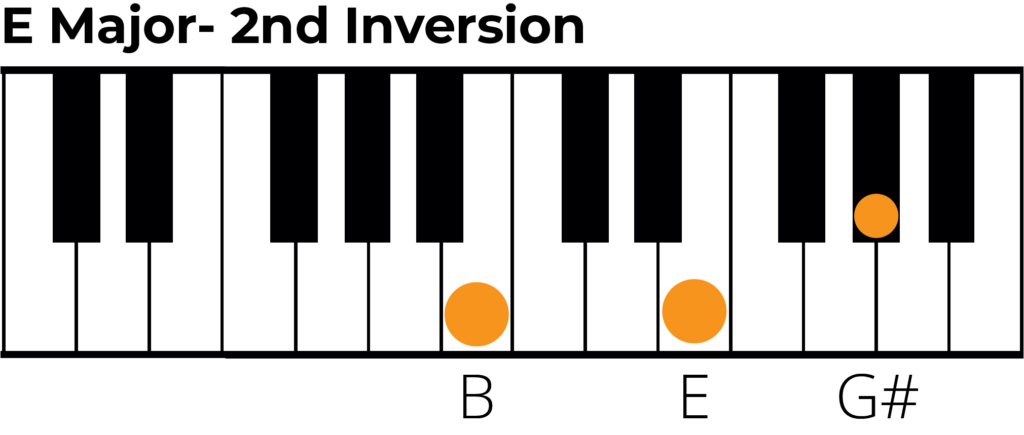
2nd Inversion on Guitar
Below are the most common shapes for playing a E maj triad in the 2nd inversion. Remember that we can only use certain shapes are the pitches of the three notes are important.

Triads from the E Major Scale
By looking at the E Major scale we can actually make triads built on each note and only using notes from E major. Below you can see a list of each triad we will create be starting on different notes of the scale.
- E Major
- F# Minor
- G# Minor
- A Major
- B Major
- C# Minor
- D# Diminished

Famous Songs in E Major
Here’s 3 famous examples of songs in a E Major key. For this reason, they use E Major triads, as the root note chord, priminently in their chord progressions.
‘Don’t Stop Believin” – Journey
“Don’t Stop Believin’,” performed in the key of E major, is a classic rock anthem that has resonated with generations of music lovers. With its iconic melody and uplifting lyrics, this song has become a staple in the world of rock music.
‘The cave’ – Mumford & Sons
Mumford & Sons’ “The Cave,” set in the key of E major, is a folk-rock gem known for its heartfelt storytelling and infectious melodies. This song’s blend of instruments and emotionally charged lyrics have made it a standout in contemporary folk music.
‘What Makes You Beautiful’ – One Direction
One Direction’s ‘What Makes You Beautiful,’ performed in the key of E major, is a catchy pop sensation that marked the band’s meteoric rise to fame. With its infectious chorus and youthful charm, this song quickly became an anthem for a generation of fans.
Figured Bass Notation
Figured bass is an alternative way of labelling chords. It uses vertical numbers to denote chords and it can be used to label any type of triad. Below are the figured bass symbols for the E Major chord in all three inversions.
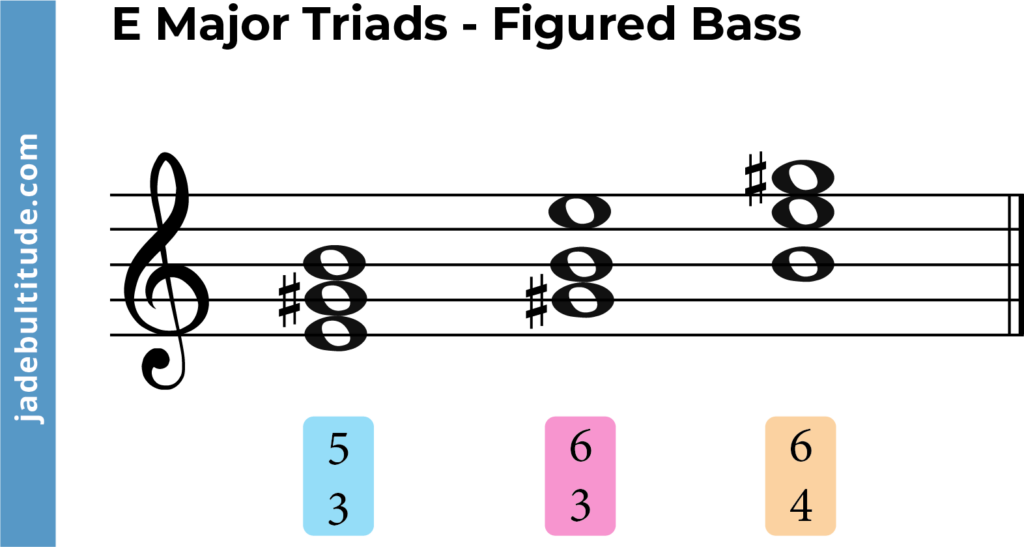
- Root Position – 3/5 indicates that a 3rd above the root and a 5th above the root are to be played.
- 1st Inversion – 3/6 indicates that a 3rd and 6th should be played above the root note
- 2nd inversion – 4/6 indicates that a 4th and 6th above the root note should be played.
There are also figured bass symbols for minor, diminished and augmented triads. A summary is below, but if you want a deepen explanation of how to use this notation, check out our complete guide to figured bass.
What’s next….?
- Learn how to construct the E Minor triad
- Swat up on your chord knowledge with our complete guide to chords.
